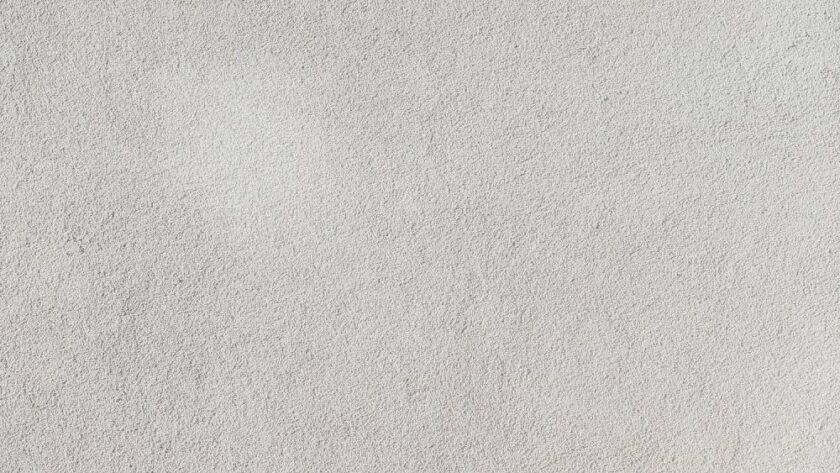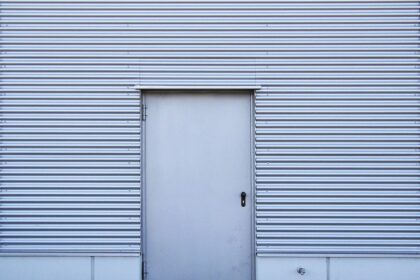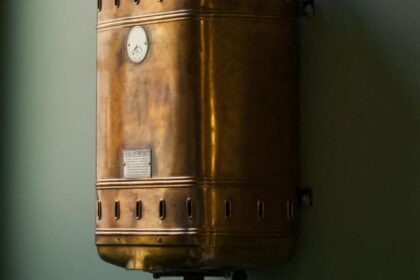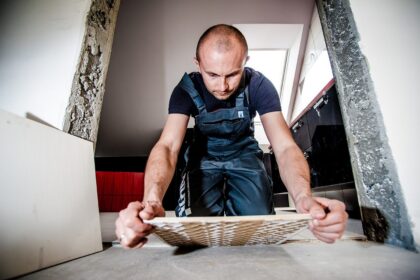How long does the putty dry? The modern system of finishing residential and utility buildings consists of various types of materials. Raw closed objects, made of both brick and hollow bricks, require the use of finishing materials, which will then allow for painting the walls and other works, which will result in a space ready for use. The final effect of the work is, of course, aesthetics and durability. Various masses are available on the construction market, intended for initial finishing works, as well as filling the loss. Due to the fact that it is very popular to finish residential surfaces with decorative concrete, it is important to obtain a perfectly smooth base surface, which will translate into the aesthetics of the finish.
Gypsum putty – preliminary preparation of the wall and ceiling
 Finishing teams have the necessary experience that allows them to carry out the work efficiently. They also use appropriate materials. Just like the load-bearing walls, the cannon, as well as the ceilings, require the use of various types of putties and plasters, which translate into a smooth, even surface. When it comes to supplementing larger cavities as well as unevenness, gypsum putty is used in the initial stage of work. It is very easy to apply and easy to spread. It is usually a quick drying material.
Finishing teams have the necessary experience that allows them to carry out the work efficiently. They also use appropriate materials. Just like the load-bearing walls, the cannon, as well as the ceilings, require the use of various types of putties and plasters, which translate into a smooth, even surface. When it comes to supplementing larger cavities as well as unevenness, gypsum putty is used in the initial stage of work. It is very easy to apply and easy to spread. It is usually a quick drying material.
- https://www.gcreations.pl/czym-jest-i-jak-dziala-upadlosc-konsumencka/
- https://www.zti.com.pl/upadlosc-gospodarcza-z-dlugami-jak-przeprowadzic-ten-proces/
- https://www.iicd.pl/ile-kosztuje-blacha-trapezowa-na-dach/
Gypsum putty is currently the most popular material in this category. Manufacturers have developed a high-quality formula. It is possible to purchase ready-mixed mass, which translates into the total time of order completion. Ready-made gypsum plaster is currently used in many objects. In particular, multi-area projects require solutions that will allow for quick implementation, while maintaining all procedures. Loose putty can be used for small home renovations, when a small amount of mass is really needed.
A unique way to finish an apartment and a house
The interior design, its elegance and durability are important elements of both residential and usable spaces. It is very important that the finishing materials used in individual rooms are adapted to their character. Decorative concrete is used more and more often, all thanks to its properties and quick application. It can be successfully used both in the living room, as a decorative element, on the occasion of furniture, in the kitchen or bathroom. It is resistant to moisture as well as water and is perfect for underfloor heating.
Just remember to properly prepare the ground for this type of installation. Another method, equally effective and widely used, are decorative stones. They look great, are used in many rooms, and their installation is also easy, but requires some experience. Ready-made decorative stone glue makes work much easier. By using a ready-made mass, as in the case of gypsum putty, the time needed for self-preparation of the material was saved.
Also, the works are carried out in greater cleanliness, because often mixing loose glue with water led to material splashes. The finished material also means a reduction in the tools needed during the work, while the mass is uniform, which makes it easier to apply. Decorative stone glue is very durable and effective, based on the right procedure.
How to prepare the surface for decorative stone?
The use of gypsum putty is the initial stage of work, the task of which is to level various types of unevenness and larger defects. The next stage of work is the use of putty, which is used to obtain a perfectly smooth surface, fill in small defects, as well as unevenness. Due to the fact that this is the final material, the plaster layer that is applied to the wall or ceiling cannot be too thick. The setting time of the plaster is about 2-3 hours, but a lot depends on the level of its dilution, i.e. the method of preparation.
In addition, for people who plan to paint rooms, a paint primer, which is applied to a dry plaster, will be perfect. It allows for proper surface preparation. Another solution may be a universal primer, which is also an excellent material for this type of implementation.
Is putty necessary?
Appropriate preparation of rooms for the final finish, such as the use of decorative materials or their painting, requires the use of both gypsum putty and gypsum plaster. Raw walls, often plastered or made of gypsum boards, require appropriate treatment. Otherwise, painting as well as laying decorative stone or glaze will be impossible due to unevenness. Therefore, finishing coats are a necessary material on every construction site, and their use is one of the stages of comprehensive finishing of rooms.









